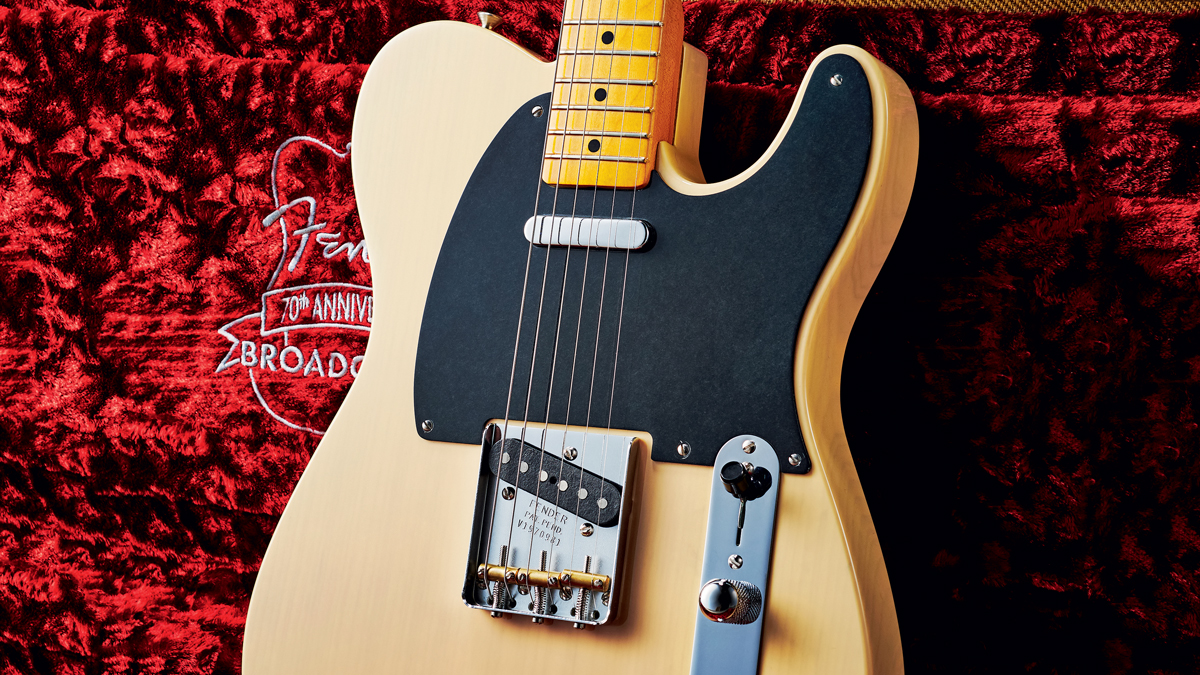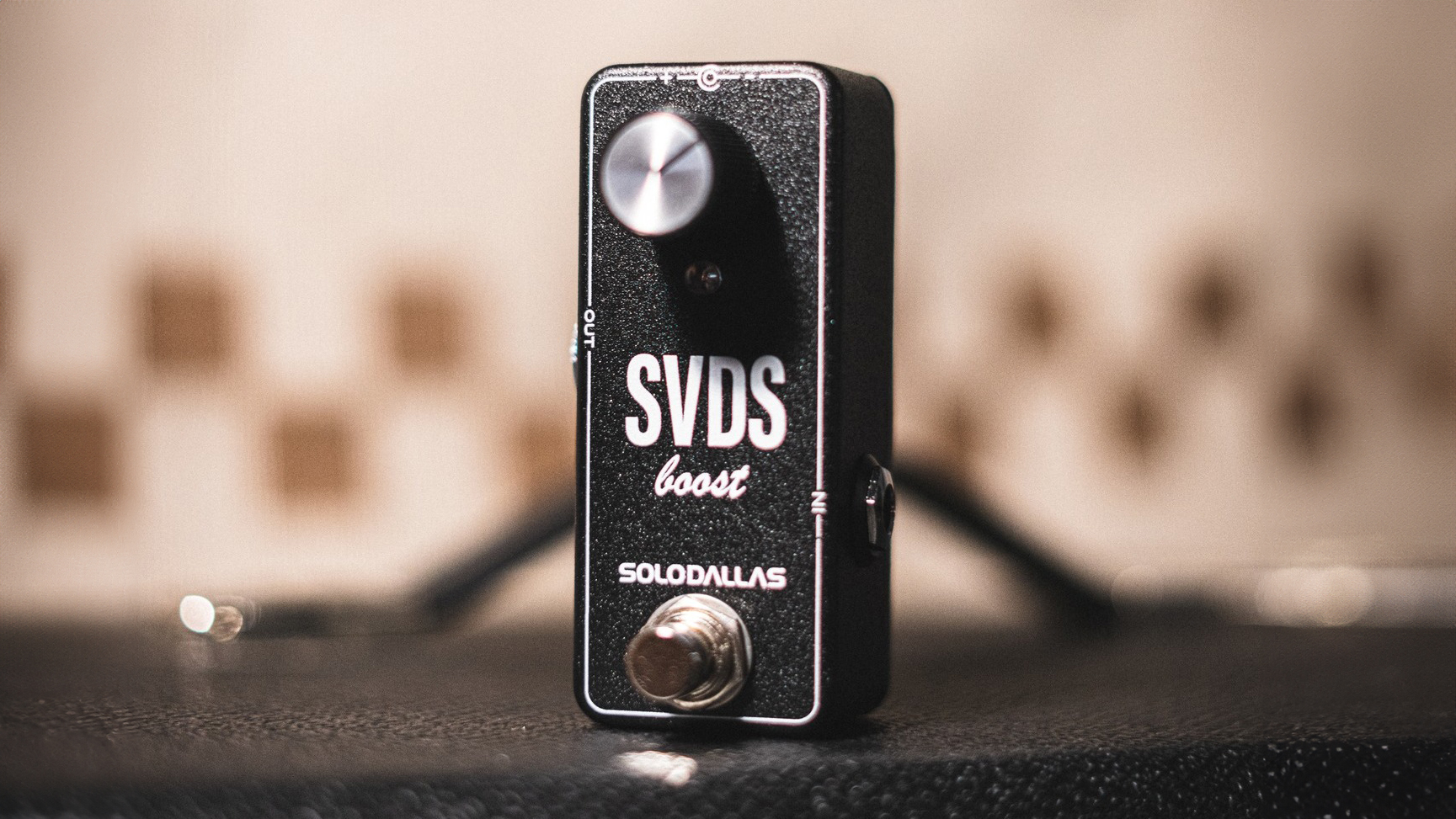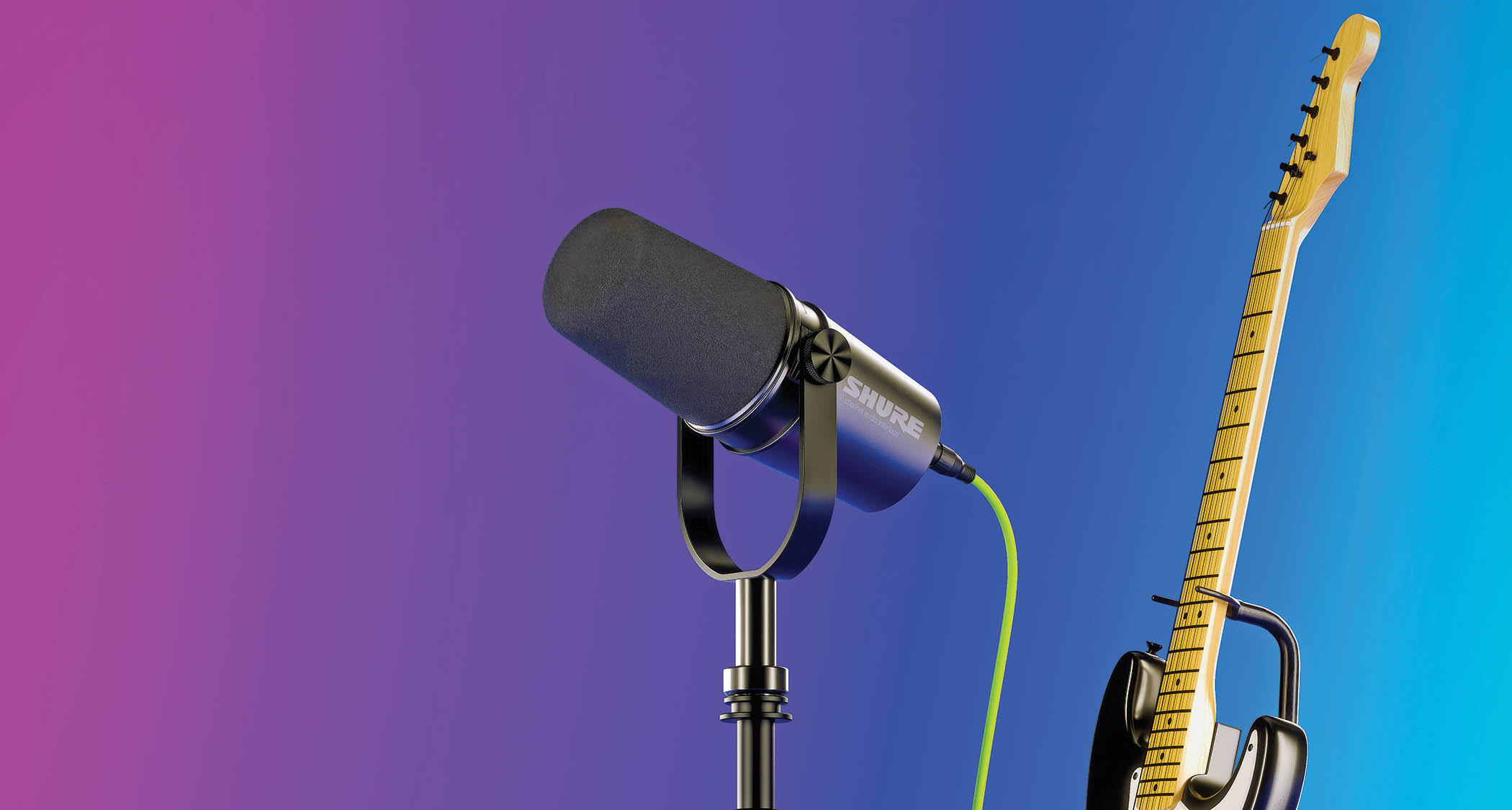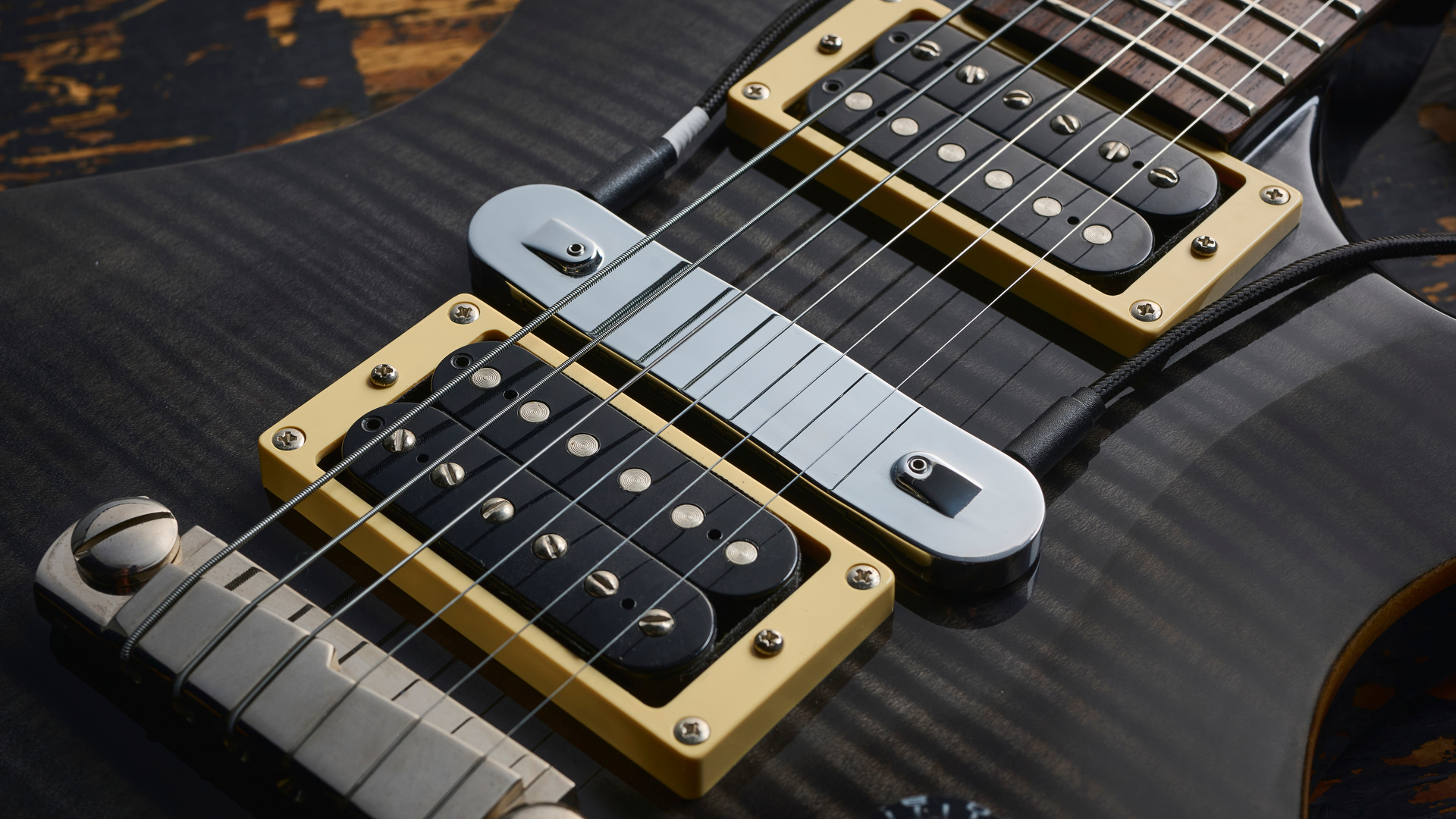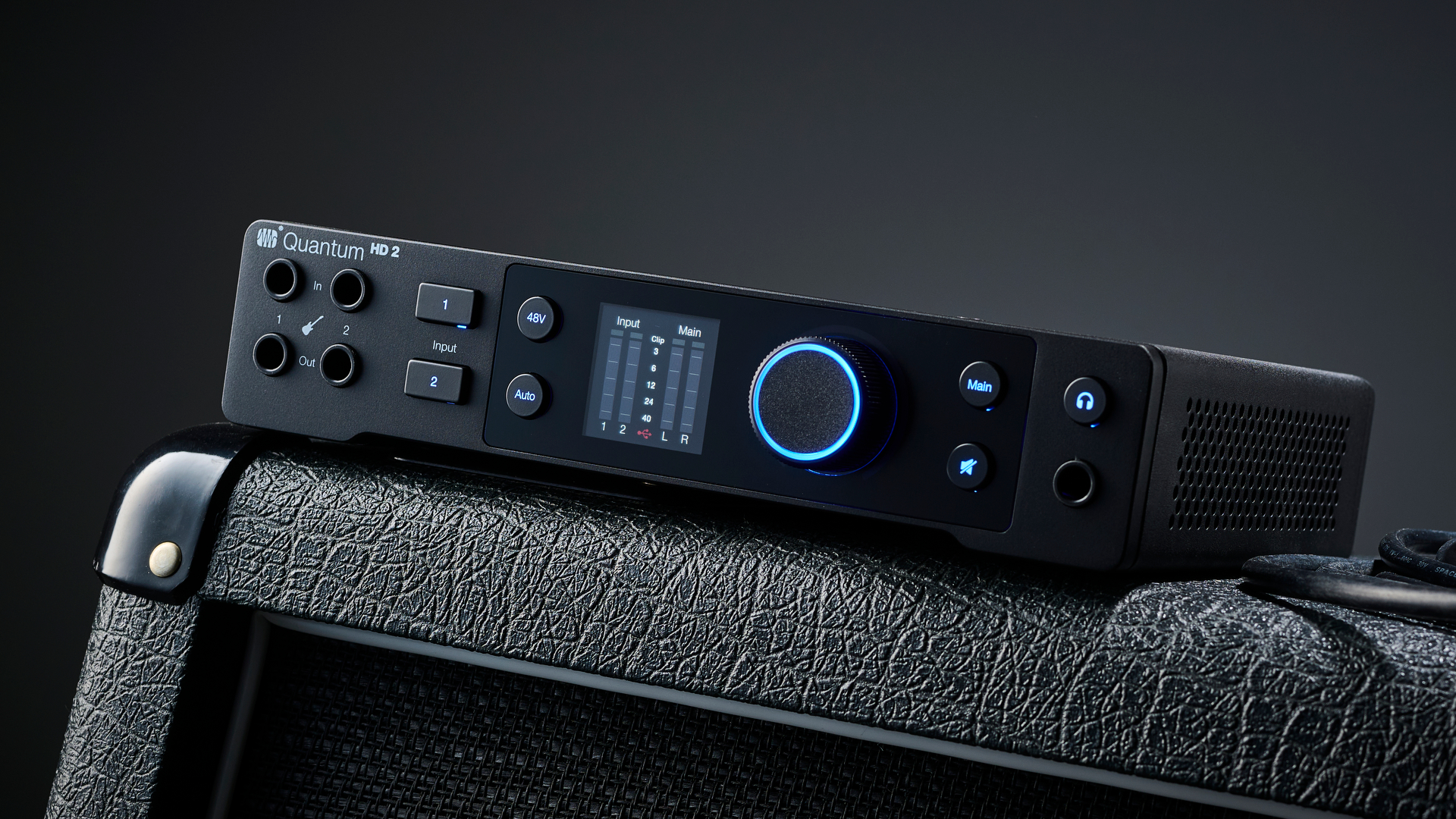Guitar World Verdict
An on-point vintage reproduction of Fender's first twin-pickup production solidbody, the Broadcaster has that Blackguard charm in abundance with some truly great tones to be had.
Pros
- +
Good vintage-specific build and details.
- +
It's the sound that really sells it.
- +
Limited edition kudos – it's only produced this year.
- +
Deluxe case.
Cons
- -
The optional wiring ‘kit’ is cursory.
- -
This gloss nitro neck finish won’t be for everyone.
- -
That goes for the 7.25" fingerboard radius and small frets.
You can trust Guitar World
While we were enjoying the sunshine and positive vibe of this year’s NAMM Show in California back in January, there were a few corks being popped on the Fender stand.
2020 marks the 70th anniversary of the year this game began, when Leo Fender and his small team first started making what was to become the Telecaster – a virtual stone’s throw away from the vast Anaheim Convention Center in Orange County.
You’ll know the story. Technically, the single-pickup Esquire was the first Fender electric Spanish guitar, initially displayed at a Chicago trade show in July 1950. And although dual-pickup versions are documented, it was the dual-pickup Broadcaster that was the first electric Spanish guitar built in any quantity – hence its claim to being the first production solidbody electric – with its adjustable truss rod, ash body, blonde finish and black pickguard.
We’re told that around 250 were made before Gretsch objected to the name in February 1951, which was subsequently simply cut off the headstock decal creating the ‘no-caster’ period.
The neck pickup, so often ignored, really elevates this Custom Shop-designed pickup set: definitely more Strat-y than you might be used to hearing
The new name, Telecaster, was conceived and a year after that first trade show Fender had the dual- pickup Tele and the single-pickup Esquire in its catalogue. The revolution had begun.
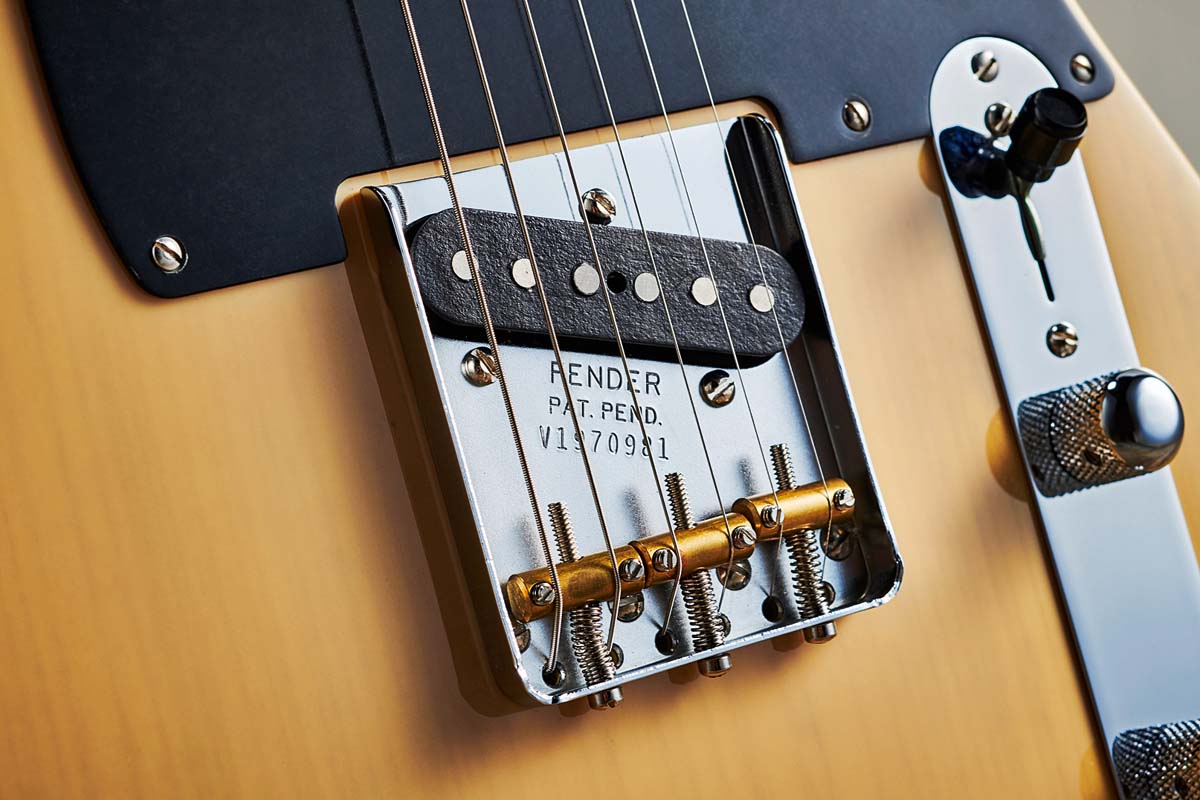
This new guitar is the first Broadcaster to be sold by Fender for 70 years, a limited-edition for 2020 only.
It’s the most expensive and earliest vintage-like ‘Telecaster’ in the USA production range before you head up to the Custom Shop where, again for this year only, you can order a Broadcaster in various states of relic at pretty much twice the price of our ‘standard’ model.
And there’s also a 70th Anniversary Esquire and a 60th Anniversary Jazz bass. A proverbial party.
The limited-edition Broadcaster is obviously a very close cousin to the existing American Original ’50s Tele in its standard Blackguard livery and Butterscotch Blonde finish.
This is a rather glorious example of why Fender is still making Broadcasters and why we’re still writing about them
As with the Jimmy Page ‘mirror’ Tele of last year, for example, there’s a little case candy, too – no mirrors here but we do get the ‘ash tray’ cover and an old-style thin leather strap. You also get a tweed case with a bit of ‘70th Anniversary’ embroidery.
The guitar is wired like a modern Telecaster but another potential draw is “an optional original Broadcaster wiring kit included in the case [that] can be installed to replicate the unique ‘blend’ circuit used in original Broadcasters”, says Fender.
As many of you will know, the original two-pickup wiring used until it was modified in 1952 was rather different from the ‘modern’ Telecaster, which didn’t occur until 1967, after Leo Fender had sold his company to CBS.
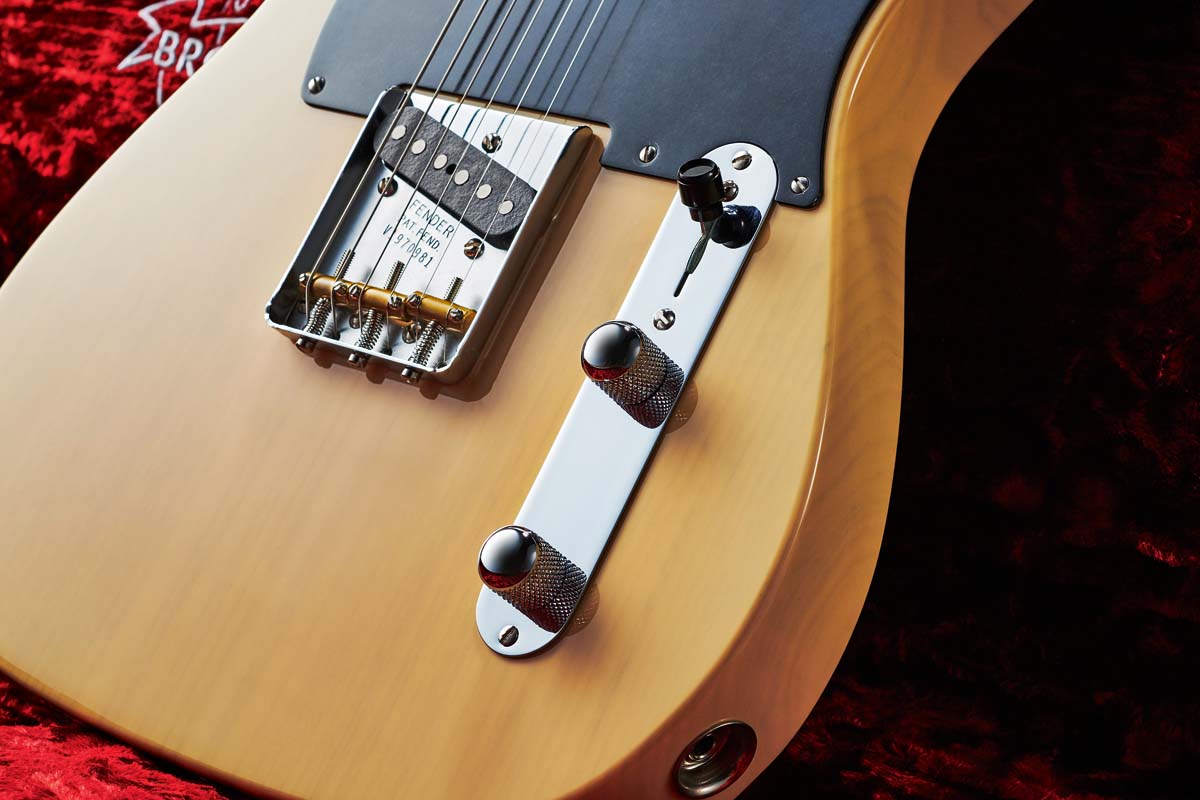
The opportunity, then, to drive the Broadcaster as players would have done 70 years ago would certainly be fun. However, the ‘kit’ is just one 15kohm resistor that you can buy for pence at any electronics outlet, and rewiring it in 1950-style is a little more involved than just adding that resistor like, for example, a treble bleed cap.
If the following words and phrases get your blood pumping, you’re in for a treat here: nitrocellulose, original 7.25-inch fingerboard radius, phenolic pickguard, ‘U’-shaped neck, small – but tall – frets, uncompensated brass barrel saddles. Hey, even the screws are slot-head (not crosshead) because that’s what Fender used back then.
It’s all part of the magic, myth and voodoo of those early Blackguard Fenders and this is as close as you’re going to get in terms of a modern production version. If you want a quaff and taste of the original ‘canoe paddle’, then you’ve come to the right place.
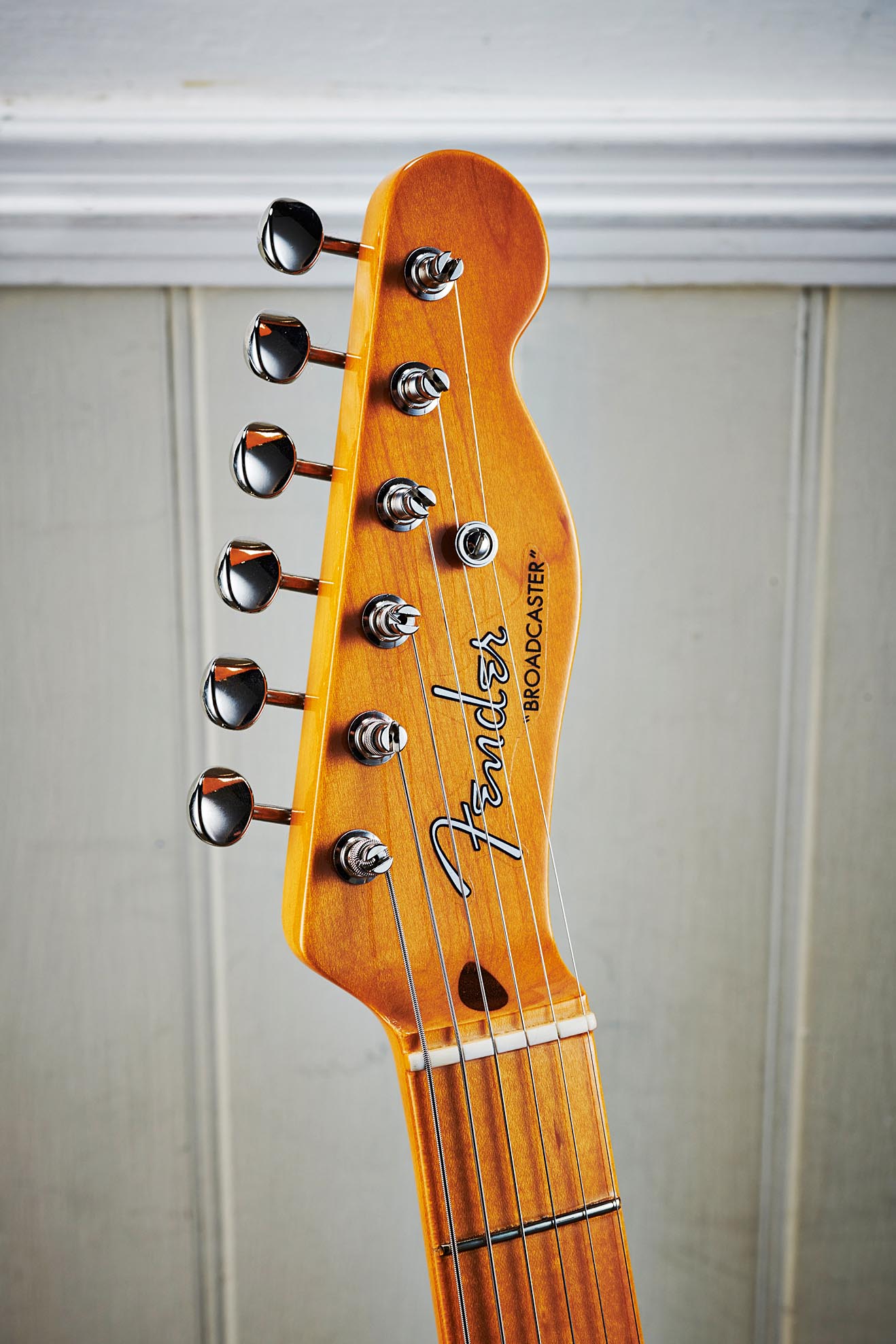
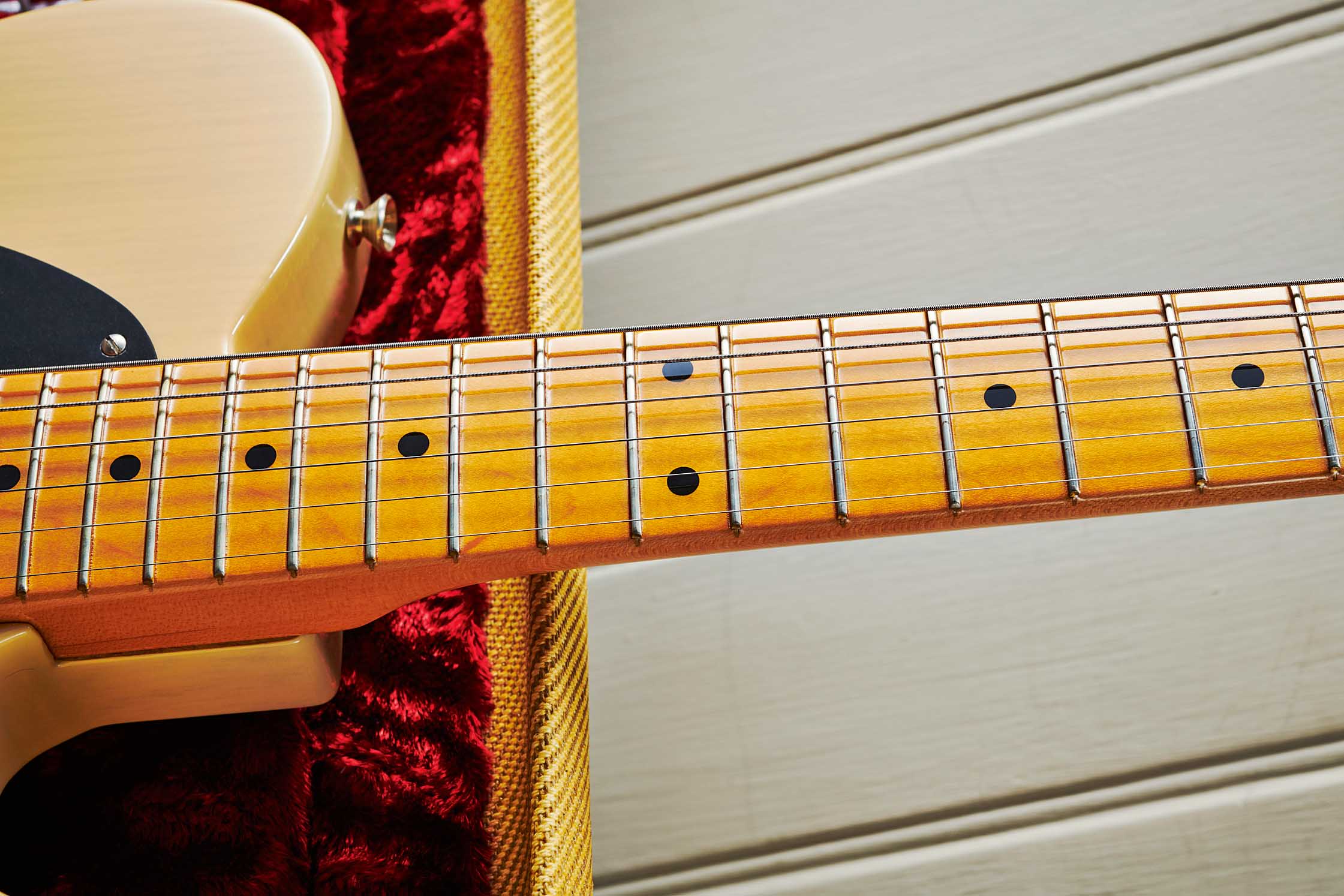
Feel & Sounds
It’s a medium weight at 3.57kg (7.85lb) and you can see the striped, virtually quarter-sawn grain of the ash body – which actually looks like one piece even though it’s probably center-joined – under the semi-opaque blonde finish. That finish is a lighter, less yellow hue than the majority of original Blackguards we’re shown.
Classed as a ’50 Broadcaster ‘U’ profile, it’s a sizeable neck with plenty of shoulder to the profile and tapers in terms of depth from 22.7mm (0.89 inches) at the 1st fret to 25.5mm (one inch) by the 12th.
The nut width is spec’d slightly narrower at 41.4mm (1.630 inches) compared with the American Original ’50s Tele at 42mm (1.650 inches), although ours actually measures in between those at 41.84mm (1.647 inches). Splitting hairs.
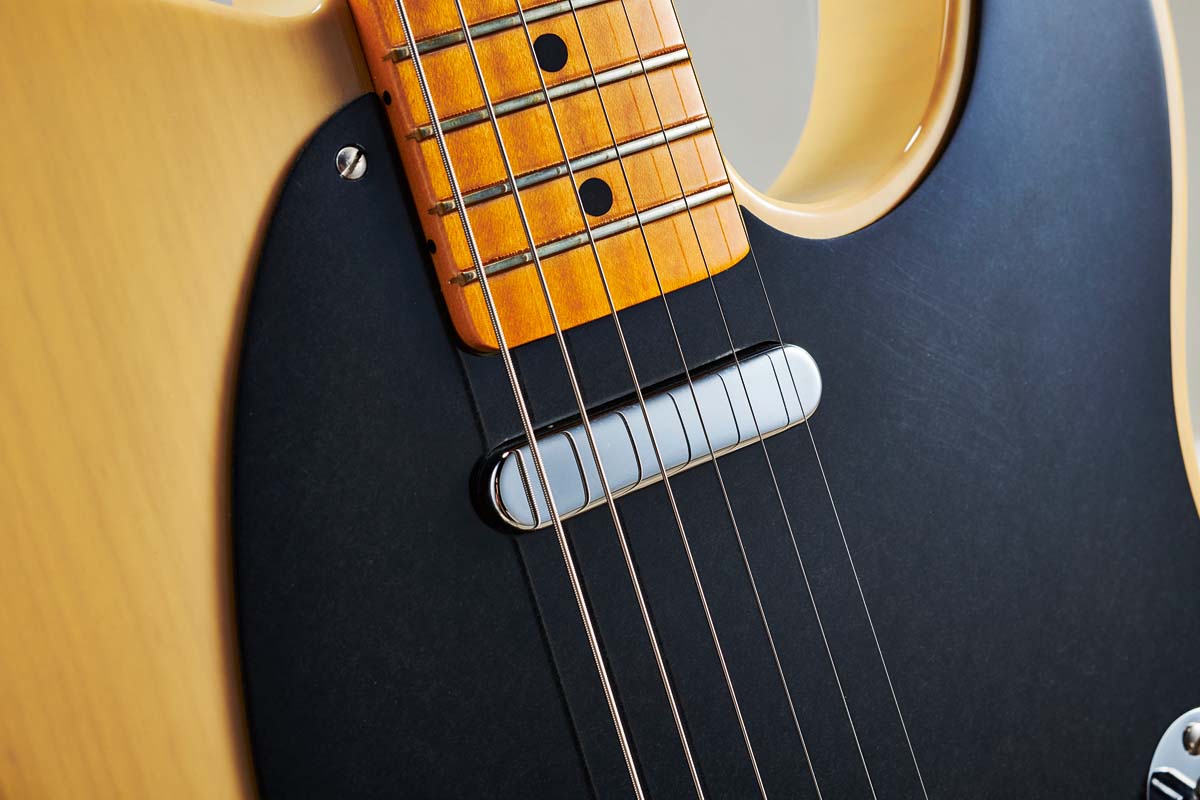
There’s plenty of choice in Fender’s range and finding your Telecaster fit isn’t always easy; this is (yet) another flavor.
The bright, clear and defined steel guitar influence is more than evident, of course, and the flat-pole bridge pickup here combines a strong output for which the Broadcaster is renowned with a noticeably vocal midrange, especially as we start to crank things up.
But the neck pickup, so often ignored, really elevates this Custom Shop-designed pickup set: definitely more Strat-y in character than you might be used to hearing but with a seemingly smoother attack.
In both positions there’s noticeable depth below the clarity and running the volume back a little way, while softening the highs, doesn’t lose that definition. The non-original parallel mix holds its own as the third distinct sound and provides the icing.
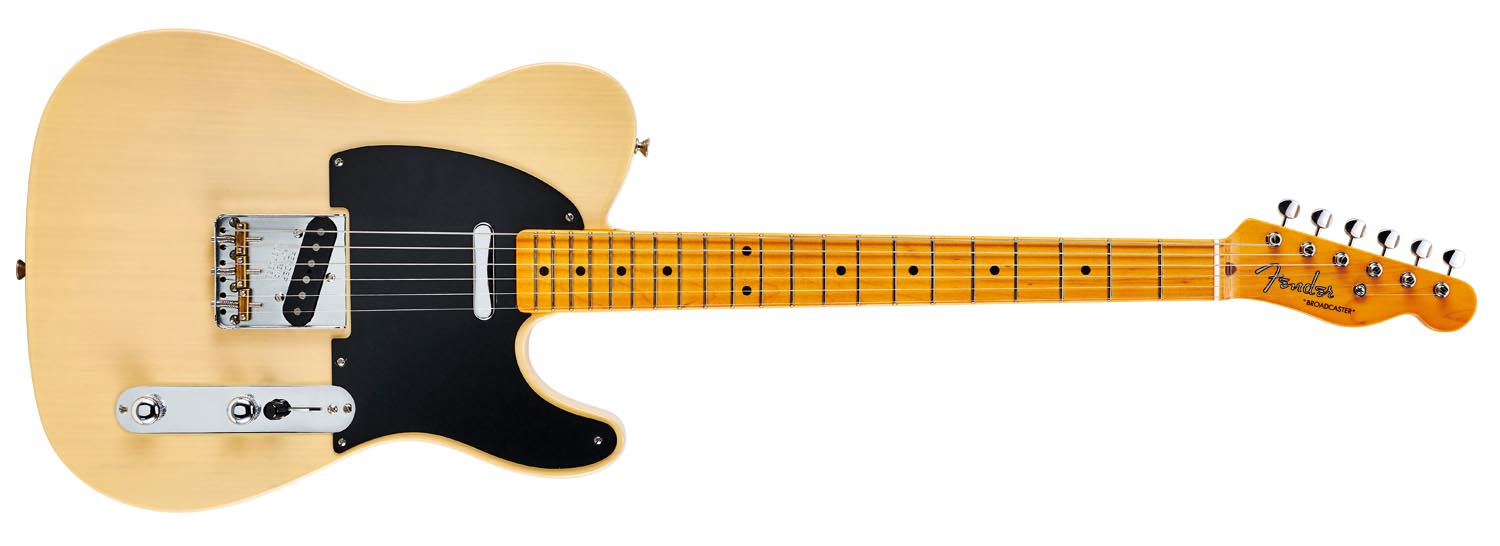
For many, though, it’s all about the bridge pickup but irrespective of its past and how close (or not) some will think it gets, the almost enhanced, magnified voices here are very compelling, particularly when you coax slightly muted ‘cleaner’ sounds with volume reduction.
The tone control works really well, too, pulling down the highs subtly before that pretend bass guitar-like woof. Simple and primitive it may be but the extra spice here is noticeable. Like we said, it’s another flavor to the recipe.
There’s no hum-cancelling in mixed position, a big ‘clonk’ as you change pickups, and we’d say these pickups certainly don’t sound or feel over-potted. Best you strap yourself in.
Testing a pretty new gloss nitro-necked guitar in the height of our August heatwave does throw us a curveball: things get sticky pretty quickly. The fretwire might be classed as ‘tall’ but it barely sits a millimeter above the finish.
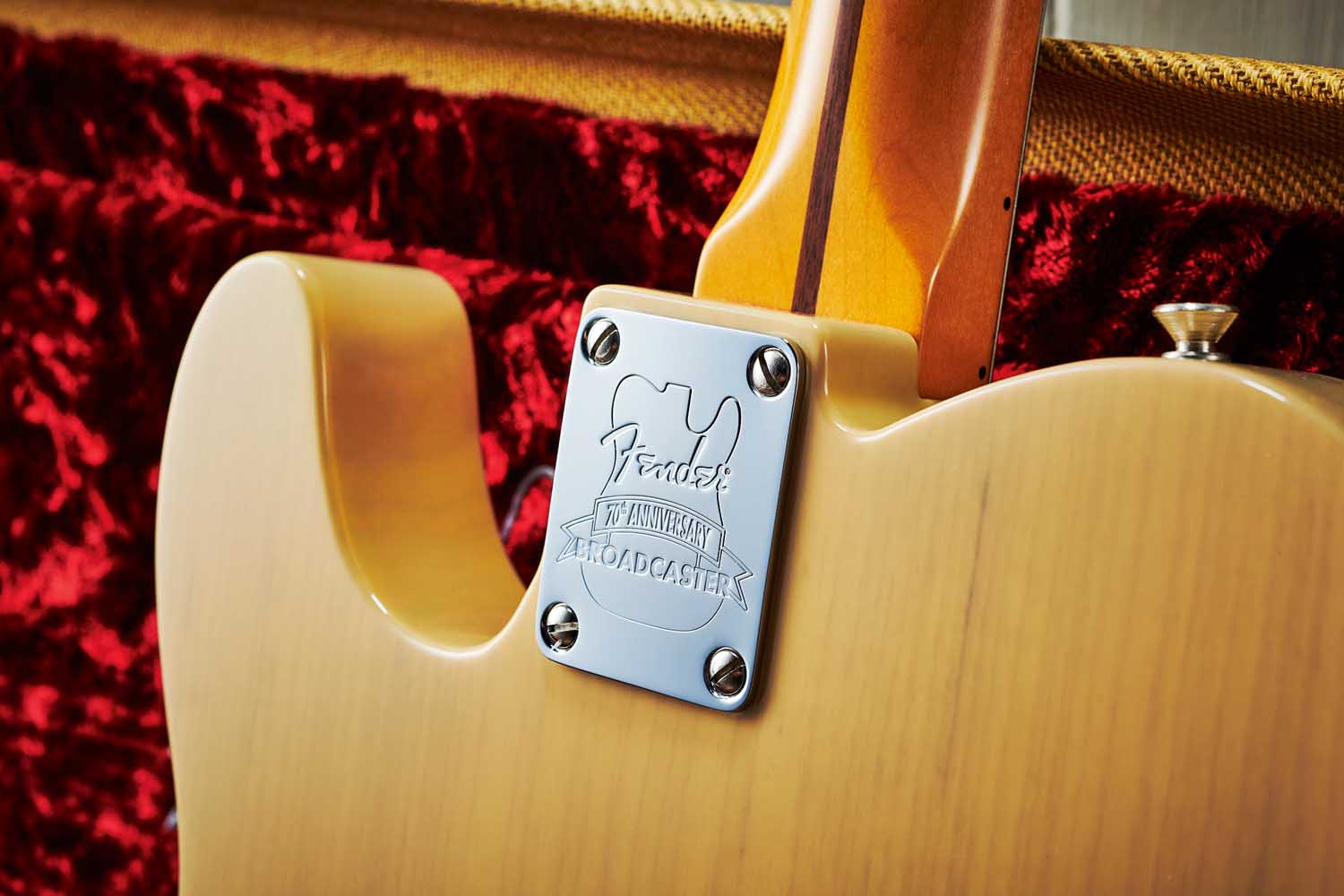
While we’re at it, the four neck screws needed tightening and if things like protruding saddle-height adjustment screws bother you then you’ll want to install a neck shim. And technically the intonation isn’t Auto-Tune correct, either. Fender makes plenty of guitars that do that.
That said, the vintage fingerboard radius feels great and the 1.6mm string height at the 12th on both treble and bass sides doesn’t produce any choking on higher-fret bends.
Some will want to nod sagely about the fine details of a guitar they’ve never played. For us, though, it’s all about the sound – and this is a rather glorious example of why Fender is still making them and we’re still writing about them.
Verdict
As we documented in our Historic Hardware feature back in issue 461, a whole industry has sprung up around the original Blackguard period and you could probably spend a lifetime obsessing about this introductory period of Fender’s original solidbody, even though the reality is that few of us will actually get to play the real thing, certainly in anger.
This ‘as new’ Blackguard, then, is for those of us who don’t have the time or will to obsess about the myth.
It’s a tribute that’s more focused in detail than the decade-specific American Original ’50s Tele and, certainly from our experience of the real thing, gets as close as today’s modern manufacturing and production business model allows. As we said, the Custom Shop version will narrow the gap further but that does come at a more elevated price.
To some, this will appear as just another vintage-style Tele – another marketing ploy to sell guitars. Don’t knock it until you plug one in. It’s a very good-sounding slice of history, nicely executed.
Specs
- PRICE: $1,999 / £2,009 (inc case)
- ORIGIN: USA
- TYPE: Single-cutaway solidbody electric
- BODY: Ash
- NECK: Slab-sawn maple, ‘50 Broadcaster ‘U’ profile, bolt-on
- SCALE LENGTH: 648mm (25.5”)
- NUT/WIDTH: Bone/41.84mm
- FINGERBOARD: Maple (neck face), black dot markers, 241mm (9.5”) radius
- FRETS: 21, vintage tall
- HARDWARE: 3-saddle vintage-style strings-through-body Tele with brass barrel saddles, vintage-style split post ‘Fender’ logo’d tuners – nickel/chrome plated
- ELECTRICS: Fender Custom Shop Designed ’50-’51 Blackguard set, 3-position toggle pickup selector switch, individual pickup volume and tone controls
- WEIGHT (kg/lb): 3.57/7.85
- OPTIONS: None
- RANGE OPTIONS: American Original ’50s Telecaster ($1,999 / £1,699)
- LEFT-HANDERS: Yes, American Original ’50s Telecaster ($1,999 / £1,699)
- FINISHES: Blackguard Blonde – all gloss nitrocellulose
- CONTACT: Fender

Dave Burrluck is one of the world’s most experienced guitar journalists, who started writing back in the '80s for International Musician and Recording World, co-founded The Guitar Magazine and has been the Gear Reviews Editor of Guitarist magazine for the past two decades. Along the way, Dave has been the sole author of The PRS Guitar Book and The Player's Guide to Guitar Maintenance as well as contributing to numerous other books on the electric guitar. Dave is an active gigging and recording musician and still finds time to make, repair and mod guitars, not least for Guitarist’s The Mod Squad.
“More people play stop-tails than guitars with locking tremolos. We dig both”: EVH delivers on its hardtail promise and launches the Wolfgang Standard T.O.M. – which vows to take Eddie's legacy to new heights
“What blew me away was that everyone wanted the curly maple top. People were calling, saying, ‘I’ve got to have the bird inlays’”: Paul Reed Smith on raising the Standard 24, finally cracking the noise-free guitar and why John Sykes is a tone hero
